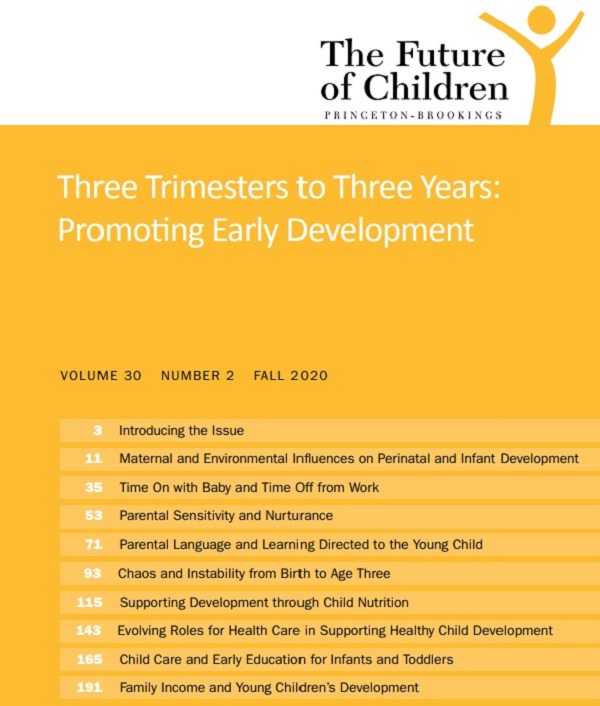Nicholson-Funded Future of Children Issue Examines Full Continuum of Early Childhood Development
Most research into the early years of a child’s development has considered the nine months of pregnancy as separate from the first three years of life. In the latest issue of the Future of Children Journal, funded by The Nicholson Foundation, a group of experts show why the period from conception through age 3 – when the most rapid growth of the brain and behavior occur – should be treated as a single continuum.
Co-editors Anna Aizer of Brown University and Jeanne Brooks-Gunn of Teachers College, Columbia University, say the purpose of “Three Trimesters to Three Years: Promoting Early Development” is to highlight the continuity of a child’s development, starting at pregnancy.
Accordingly, the issue has been organized to reflect the inputs necessary for health and development during this longer than usually examined period of growth:
- Pregnancy and fetal development: the child’s first home;
- Parental nurturance and sensitivity: the child’s first relationships;
- Parental language and cognitive activities: the child’s first learning environment;
- Stability and organization in the home and neighborhood: the child’s experience of consistency;
- Family income: the child’s experience of material security;
- Child nutrition: the child’s experience of food security; health care: the universal service;
- Parental leave to care for the baby: the balance between family and work; and
- Child care and education: the first out-of-home caregivers and teachers.
While individual articles focus on those individual factors affecting development, three themes emerge across the entire issue: 1) Children’s wellbeing very much depends on their mothers’ health and wellbeing. 2) The importance of family income and the critical role that government plays in the lives of all families, especially families with fewer resources. 3) The strong interrelationships across multiple domains of child development. Language acquisition, nutrition, health, and developmental delays shouldn’t be considered separately. Not only are they affected by many of the same inputs, but development in one domain affects development in another.
The Future of Children is published in collaboration with the Princeton School of Public and International Affairs at Princeton University and the Brookings Institution.

